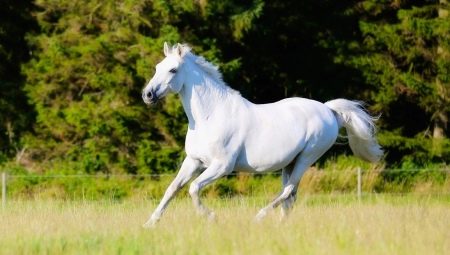One of the most beautiful and graceful shows is a horse running. In another way, the way of moving these beautiful animals is called a gait. During the run, horses make a large number of different movements. Any rider, even if he is a beginner and does not have much experience, must know exactly what methods of riding horses exist. This is very important, because depending on the specific action of the horse, the rider has to make different efforts.
Varieties of gait
There are several varieties of gait. All of them are divided into artificial and natural. The natural group includes methods of moving the animal, which are characteristic of absolutely all horses. This includes the immediate styles of running the horse, which are given to him by nature from birth. In this case, the following are implied:
- step;
- lynx;
- gallop;
- amble.
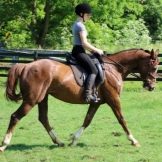
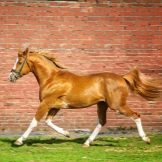
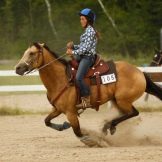
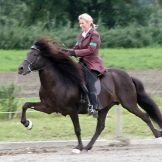
It is necessary to take into account the fact that some horses were originally born by amblers. Other individuals have to be trained separately for this move.
As for the artificial varieties of gait - their horses are mastered by regular training. Most often, these options are addressed in circus art or at competitions. To this group it is customary to include such movements of horses:
- passage;
- piaffe;
- spanish step;
- gallop on 3 legs;
- reverse gallop.
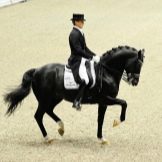
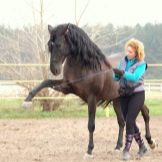


And now we will get acquainted with different types of gait in more detail.
Natural
Step
This gait of horses is as slow as possible in comparison with other movements. This is a special four-stroke allure. It differs in that it does not provide for a suspension phase. Simply put, moving step, the horse simply sequentially rearranges the hooves. Moreover, the speed of its movement is usually no more than 7.5–8 km / h.
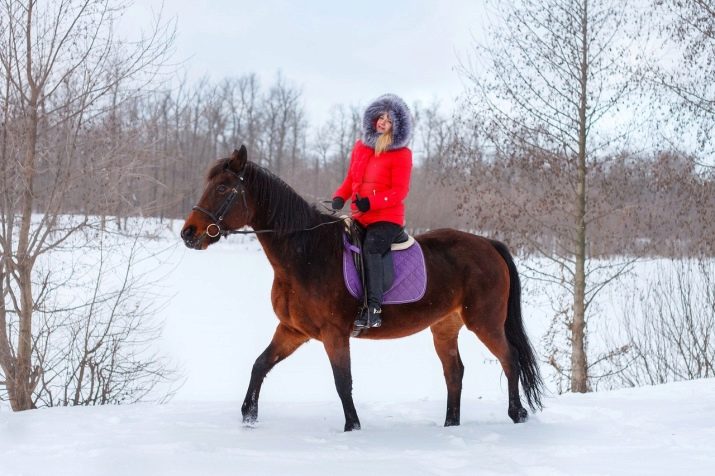
There are several varieties of the step:
- short;
- middle;
- added.
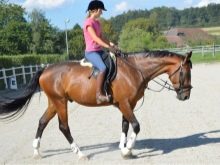

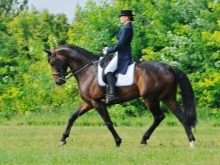
All these varieties of step differ from each other in distance, which is observed between the front and rear limbs of the animal. In the case of a short step, the traces that remain from the hind hooves are located at an impressive distance from the traces left by the front legs.
If the horse moves in accordance with the middle step, then its hind legs will always catch up with the front. All limbs will be held at approximately the same level.
If we are talking about the third type of step - added - then here the traces left by the hind hooves of the steed will begin to go ahead of the front literally a few centimeters.

Lynx
This is such a gait of a horse, which refers to two-stroke movements. Usually, beginners master it only after acquaintance with the usual step. Lynx is characterized by a more impressive horse speed. Novice riders who do not have rich experience consider this type of running one of the most difficult to master, since it provides for a phase in which the animal freezes in the air. At this moment, all her hooves come off the surface of the earth or asphalt.
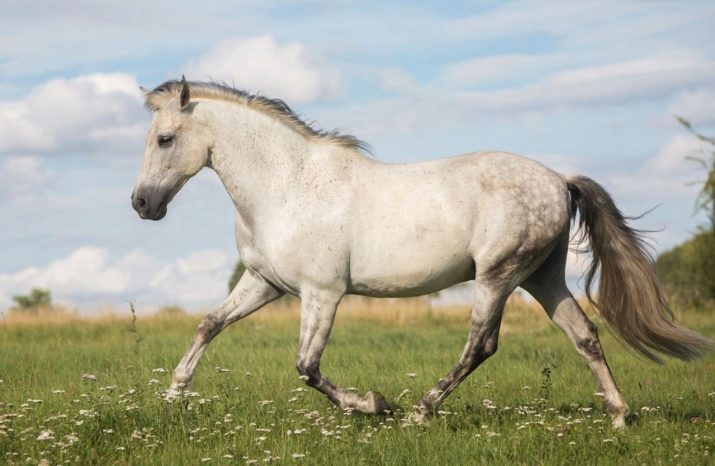
The horse, which runs at a trot, simultaneously lowers the left front and right hind legs. After this, the animal freezes for a short while in the air, and then steps on the remaining hooves. At this moment, two clearly distinguishable blows are usually heard. In order not to feel discomfort in the saddle during such a run, the rider needs to move in time with the horse, jumping a little at the time of hovering.
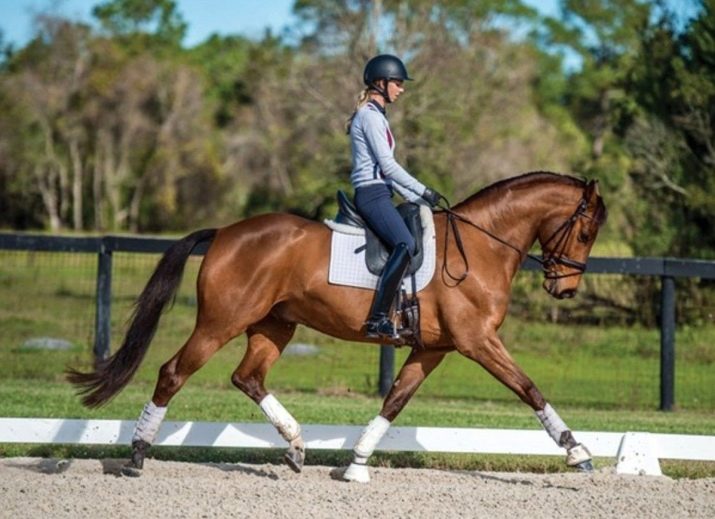
Lynx is divided into several separate types:
- collected;
- average;
- added;
- working.

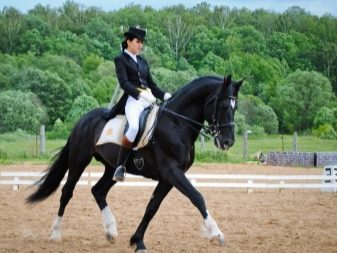
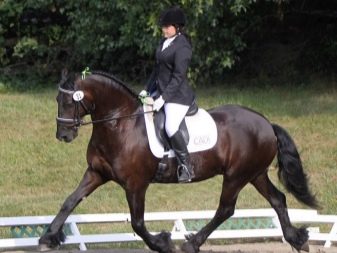
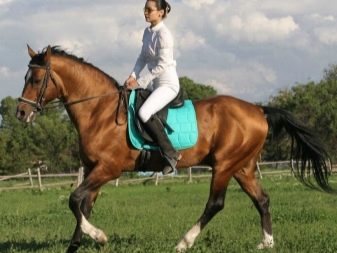
Gallop
This step is recognized as fast as possible. It is customary to refer to three-act alluras. The indicated type of horse running scares young riders the most and there is a completely expected explanation, because an animal racing at a frantic speed may seem completely uncontrollable. It is almost impossible to cope with such a colossus, so justified fear envelops people. In fact, the rider will bear this type of step much easier than trotting. The main thing in this matter is to learn how to keep a good position in the saddle.
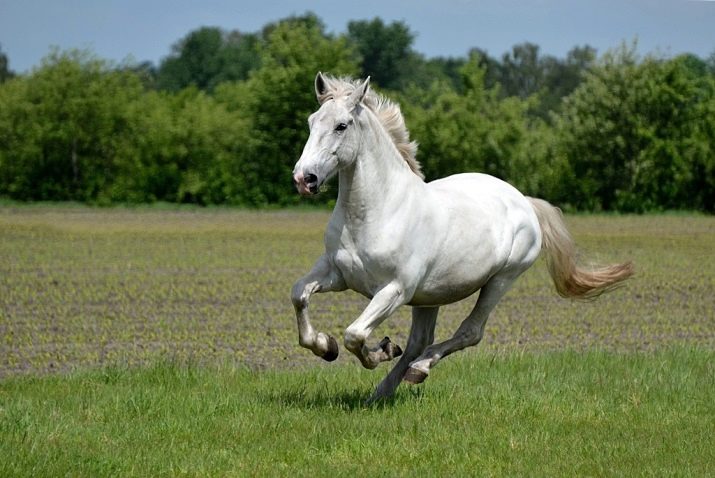
When horses gallop, usually 3 blows of hooves to the ground are heard. The running horse first brings one hind limb forward, and then the second one in a pair with the front leg parallel to it. Then the animal lowers the second front hoof. Next comes the turn of a short phase of suspension. Subsequently, this cycle repeats.

Gallop, like the rest of the varieties of horses, is divided into a number of subspecies:
- assembled (is one of the slowest options for three-stroke running - 200 m / min.);
- manege (with a similar type of gallop, the horse overcomes 300 m in one minute);
- middle (in this type of gallop, the steed runs from 400 to 700 m / min.);
- swing (in this case, the steed usually develops a speed of not more than 800 m / min.);
- career (This is the most frisky and rapid type of gallop, in which the steed develops about 1 km / min.).
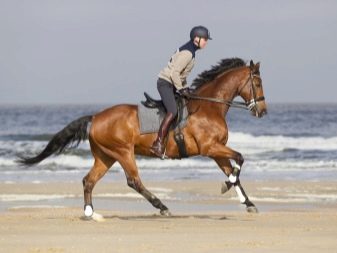

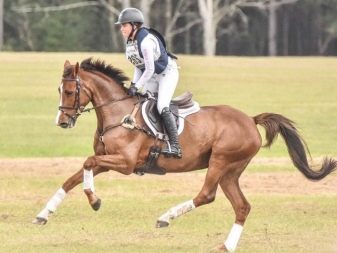
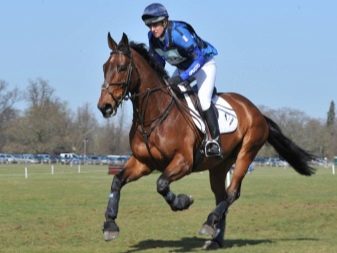
Amble
Ambler is another way of moving horses. It is a cross between a trot and a gallop. The main distinguishing feature of this type of horse racing is that with it, the animal in turn rearranges the hooves. However, they are located only on one side of the case, and not diagonally.
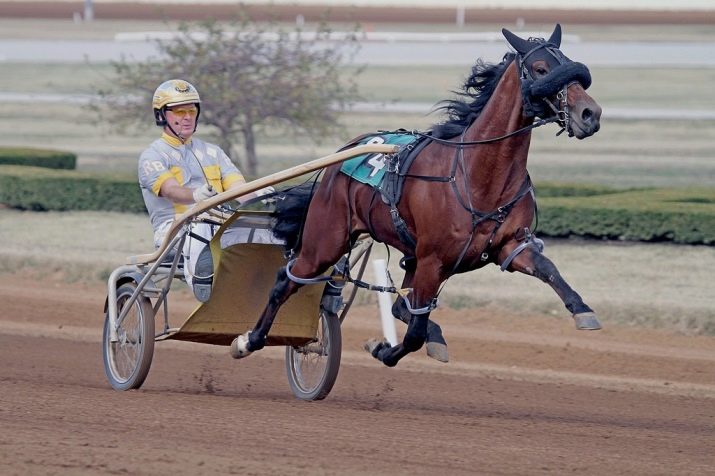
It should be noted that amblers are particularly valued, because their usual way of moving is as comfortable and optimal for riders as possible. In the process of running, there is practically no jolting and inconvenience. The amble is characteristic of certain breeds. It can be inherited from parents.It will be possible to work out the indicated valuable manner of horse movement artificially, correctly and regularly training the horse.
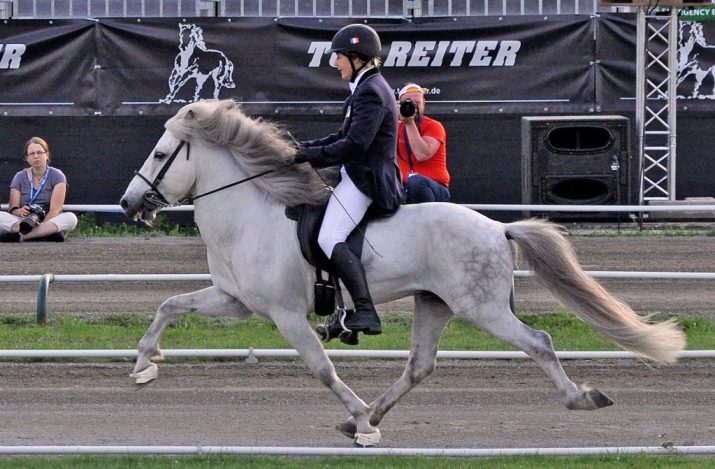
Natural types of horse gait include such types of horse movements.
- Telt. Characteristic for Icelandic horses. With him, the horse rearranges his legs in the same way as with the usual step, but moves at this time several times faster. It should be noted that the rider with this walk feels very comfortable and calm, since there is no excessive shaking.
- Paso Fino. This is called a rather frisky, but small step of the animal.
- Marsha. This is a type of amble. Some horse breeds living in Brazil can demonstrate it. For these individuals, this type of running is natural and is transmitted at the gene level. The allures of the march of the picad, the cambric and the triotad are characterized by smooth movements, which makes them especially valuable.
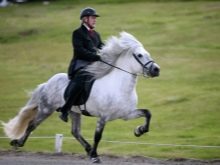

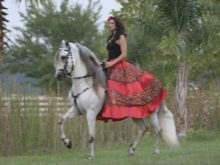
Artificial Paces
Passage
This is a kind of gait that was formed on the basis of a lynx. However, during the passage, the movement of the horse is more clear and graceful. At the same time, in addition to demonstrating the gait itself, the steed simultaneously pushes off the ground with its hind legs, lifting them high enough.
To train the animal in a passage, long and hard training is required. In this case, proper physical training plays an important role.

Piaffe
An allure called piaffe may differ from the passage described above in that the suspension phase in it is longer. In this case, the hind hooves of the horse at the moment of jumping should be bent under the body, the croup is lowered, and the spinal muscles are very tense. Because of these features, the rider will experience a clear vibration along the run of the animal.

Spanish step
In high school riding, this gait is the most important and upscale. The Spanish step provides for an alternate high rise of straight front hooves. At this time, the hind hooves move in the usual way. The degree of mastery and skills of the rider and the stallion itself in this case is evaluated not only by noticeable signs, but also by the degree of noise emitted - a correctly trained horse will move with the Spanish step as silently as possible.

Artificial Gallop Varieties
Galloping on three hooves is an unusual kind of horse running. In this case, the horse moves, using only three legs. One front hoof always remains slightly raised in the direction of travel. It must not be in contact with the surface of the earth. There is also a special reverse gallop. With it, the horse moves back. A similar type of gait is often on display in circus arenas.
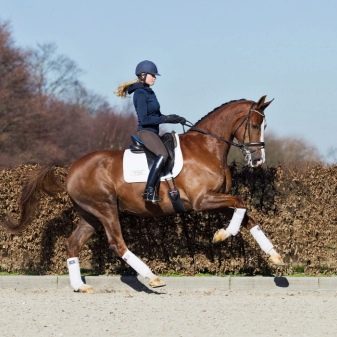

Useful tips and tricks
If a rider wants to successfully and productively interact with a horse, he needs to feel very well the tact of his movements, skillfully adapt to it. In this case, you must monitor the position of your own body and do not forget to keep the correct posture.
The Spanish step is not the easiest gait. In order to teach him a horse, it is very important to understand her psyche, as well as have a strong psychological connection with her. The animal must be confident in its rider, otherwise training will not lead to the desired results.
Please note that the fastest and fastest are only high-quality purebred horses. The speed of their gallop can range from 66 to 96 km / h.
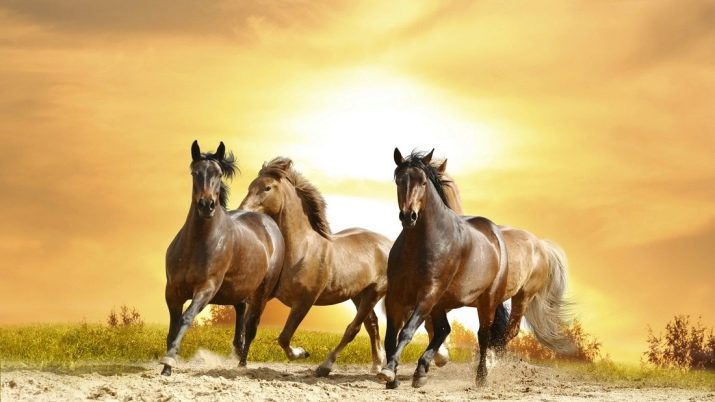
It should be borne in mind that pacers are the most valuable animals. They easily overcome impressive distances. However, one should not expect great maneuverability from such horses - it is very difficult for them to give.
You need to know that added lynx is a kind of gait that is of the anaerobic type. It is noted that for a long time the horse simply cannot run in this way - it will inevitably begin to suffocate.
If the horse runs at sufficiently fast paces in harness conditions or under saddle, it is recommended to periodically replace the pads. Due to such actions, the animal will get tired much less.
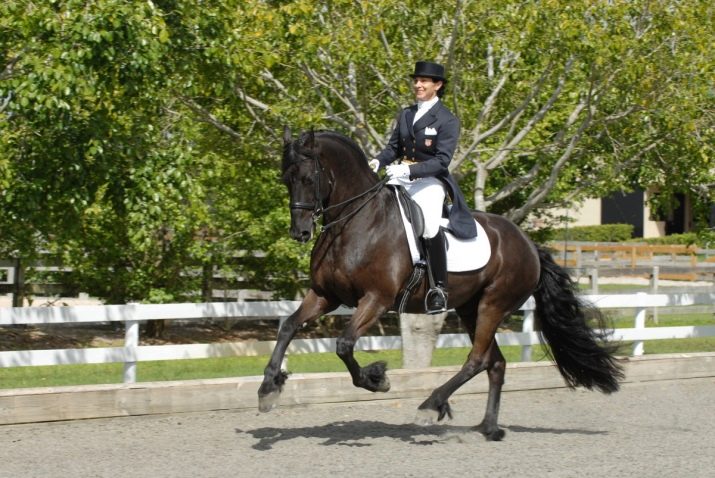
There are many more different types of horse gait, for example, predatory, feline, canter, one-sided (in which movements are made one side) and many others. The pace and nature of the move also differ - it can be either swift, expressed by leaps, or unhurried, unhurried. It is necessary to train the animal in new types of running, and at the same time to learn the necessary techniques and by himself under the supervision of professionals in equestrian clubs.
If you follow all the advice of instructors, build a trusting relationship with the horse, as a result, training will be easy and productive.
You can also see about gaits in the video below.
